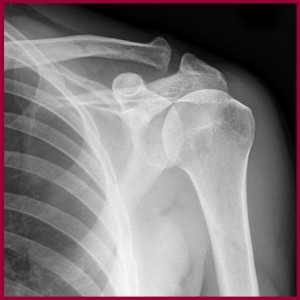Do You Really Need an X-Ray?
Now, this may be a case of stating the obvious, but if you have back pain, neck spasm or a stiffened shoulder joint an X-ray will not solve the problem. It might provide a bit more information about the problem but, by itself, it will not change anything. The same is equally true of MRI scans, which will give a fantastic view of all the tissues involved, not just the bones, but again it’s not the cure.
Osteopathy is a very ‘hands on’ therapy. We like to get our fingers and thumbs into the tissues to have a good poke around the joints and figure out what’s going on. Whilst we certainly get plenty of clues from a patient’s description of the symptoms, it’s our hands which really help us form the diagnosis and give us a picture of what’s happening.
Without an X-ray or a scan we already have a good idea as to what the problem might be, whether it’s a case of osteoarthritis, a worn out disc in the spine or a simple strain injury. However, we will often get patients thinking that an X-ray or a scan is the way forward in their quest for answers. More often than not the results of an X-ray or scan will not change the treatment plan. Indeed, because of the health and safety issues related to X-rays and the radiation doses involved doctors don’t request these examinations as often as they used to.
In the days when there were less restriction on X-rays I would often get patients arrive at the clinic with tales of ‘The X-ray says it’s arthritis’. I would have to carefully explain (not wanting to majorly disagree with the GP) that arthritis doesn’t happen overnight, it takes time to develop, so the fact that the pain has only been around for a couple of weeks probably means that it’s not all to do with the arthritic joint. Just because an X-ray shows a bit of arthritic wear and tear doesn’t mean that nothing can be done. X-ray anyone over the age of 40 and you’ll find some arthritic changes somewhere but it doesn’t have to mean pain or disability.
Also, whilst MRI scans may in themselves be less of a radiation hazard than X-rays they are still often held in reserve unless surgery is a possibility and the surgeon wants a better understanding of what will be found during the surgery.
There are plenty of trials which suggest that MRI scans can almost provide too much information. Research often concludes that if a completely healthy, symptom free bunch of people were to undergo MRI scans the results would indicate all sorts of ‘problems’. So with scan results we have to watch out for a host of red herrings that have little or nothing to do with the symptoms.
Of course, if there’s been some trauma, you’ve fallen out of a tree, been hit by a car, come off your mountain bike or something similar then A&E may well sensibly get you X-rayed to check for fractures and dislocations. However, if it’s not an obvious crash or collision don’t necessarily be in a rush to get to your GP to demand X-rays and scans.
There is no doubt that X-rays and scans have their place but it’s surprising what a good pair of hands, some sensitive fingers, a pokey couple of thumbs and some common sense can detect.
« back